
Ingredient
Lemon basil
The Zesty Herb: Unveiling the Delights of Lemon Basil
Lemon basil, also known as Thai lemon basil or hoary basil, is a herbaceous plant that belongs to the mint family. It features bright green leaves with a glossy appearance and a distinct lemony scent. The leaves are slightly serrated and have a delicate texture. When crushed or bruised, lemon basil releases a burst of citrus fragrance, reminiscent of lemon zest. Its flavor is a delightful combination of sweet basil and lemon, with a subtle peppery undertone. The herb's appearance and taste make it a visually appealing and flavorful addition to dishes.
Origins and history
Lemon basil is native to Southeast Asia, particularly Thailand, where it is widely used in Thai cuisine. It has been cultivated for centuries and holds cultural significance in Thai culinary traditions. Over time, lemon basil has gained popularity in other parts of the world, including Europe and North America, where it is now grown and enjoyed for its unique flavor.
Nutritional information
Lemon basil is a good source of vitamins A and K, providing essential nutrients for maintaining healthy vision and bone health. It also contains antioxidants that help protect the body against oxidative stress.
Allergens
Lemon basil is generally considered safe for consumption and is not known to cause common allergenic reactions. However, individuals with a known allergy to basil or other herbs in the mint family should exercise caution.
How to select
When selecting lemon basil, look for fresh, vibrant leaves that are free from wilting or discoloration. The leaves should have a strong lemon scent when gently crushed. Avoid any leaves that appear yellowed or have brown spots, as these indicate age or deterioration.
Storage recommendations
To maintain the freshness of lemon basil, store it in the refrigerator. Wrap the stems in a damp paper towel and place them in a plastic bag or container. Alternatively, you can place the stems in a glass of water, similar to a bouquet, and cover them loosely with a plastic bag. Stored this way, lemon basil can stay fresh for up to a week.
How to produce
Lemon basil can be easily grown in home gardens or containers. It thrives in well-drained soil and requires ample sunlight. Sow the seeds in spring or early summer, keeping the soil consistently moist. Regular pruning will encourage bushier growth and ensure a continuous supply of fresh leaves.
Preparation tips
Lemon basil is a versatile herb that can be used in various dishes. Add fresh lemon basil leaves to salads, pasta dishes, or stir-fries to infuse them with a citrusy aroma. It pairs well with seafood, chicken, and vegetables. Lemon basil can also be used to make flavorful pesto or infused into oils and vinegars for a tangy twist.
Substitutions
If lemon basil is not available, you can substitute it with a combination of regular basil leaves and a small amount of lemon zest to achieve a similar citrusy flavor.
Culinary uses
Lemon basil is commonly used in Thai cuisine, particularly in dishes like Thai green curry, stir-fries, and soups. It adds a refreshing and aromatic element to salads, marinades, and dressings. Lemon basil is also a popular choice for infusing beverages, such as lemonade or herbal teas.
Availability
Lemon basil is commonly available in regions where Thai or Southeast Asian ingredients are accessible. It can also be found in specialty grocery stores or farmers markets that offer a wide range of fresh herbs.
More ingredients from this category » Browse all

Basil
The King of Herbs

Asiatic pennywort
The Healing Herb: Unveiling the Wonders of Asiatic Pennywort

Lizard tail
The Enigmatic Delicacy: Lizard Tail

Lesser calamint
The Mediterranean Herb Wonder
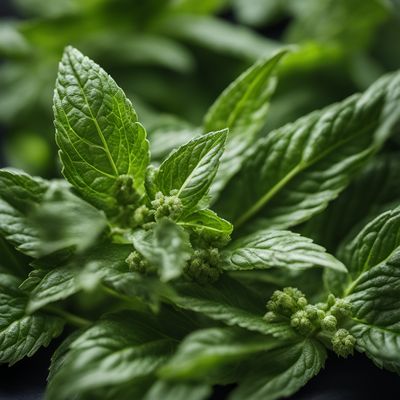
Hoary basil
The Aromatic Herb: Hoary Basil
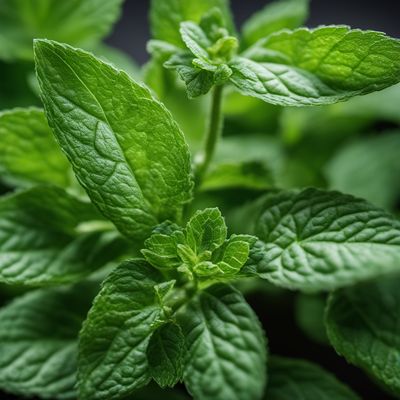
Mints
The Refreshing Herb

Rice paddy herb
The Fragrant Gem

Lemon balm
The Zesty Herb: Lemon Balm

Vietnamese mint
The Zesty Herb

Greek bush basil
The Fragrant Herb of the Mediterranean: Greek Bush Basil
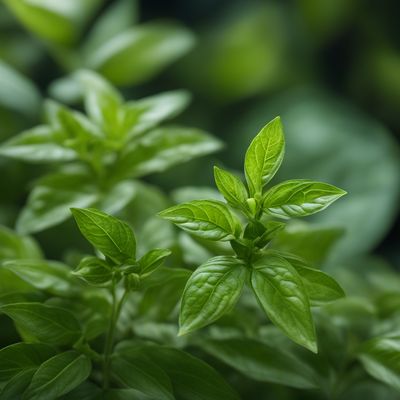
Thai basil
The Fragrant Herb: Thai Basil

Chinese mesona
The Cooling Elixir
Recipes using Lemon basil » Browse all

Chicken Parmigiana
Elevated Chicken Parmigiana: A Nouvelle Cuisine Twist

Al Dente Pasta with Fresh Tomato Sauce
Vibrant Tomato Pasta Delight

Ficelle with Herbed Goat Cheese and Prosciutto
Savory Delights: Herbed Goat Cheese and Prosciutto Ficelle
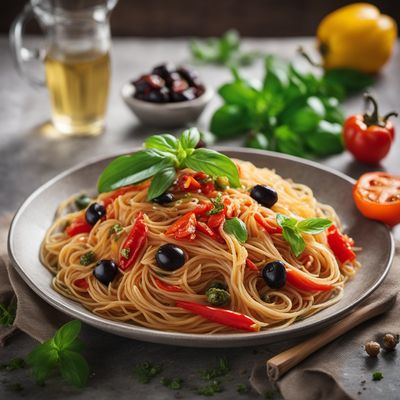
Sicilian-Inspired Vermicelli Delight
Mediterranean Sunshine on Your Plate: Sicilian Vermicelli Delight

Confit Byaldi with a Mediterranean Twist
Mediterranean Ratatouille Confit

Kung Pao Chicken - Vietnamese Style
Fiery Vietnamese Kung Pao Chicken: A Spicy Delight

Spicy Inferno Pizza
Blazing Hot Pizza: A Fiery Delight from Italy

Affunnatielle with Tomato and Basil Sauce
Savory Italian Egg Dumplings in Tomato and Basil Sauce

Tigella with Sun-Dried Tomato and Basil Filling
Sun-Kissed Delight: Tigella Stuffed with Tangy Tomato and Fragrant Basil

Thai-style Grilled Chicken Skewers
Thai-licious Lemongrass Chicken Skewers

Homemade German Gelbwurst
Golden Delight: Homemade German Gelbwurst Recipe
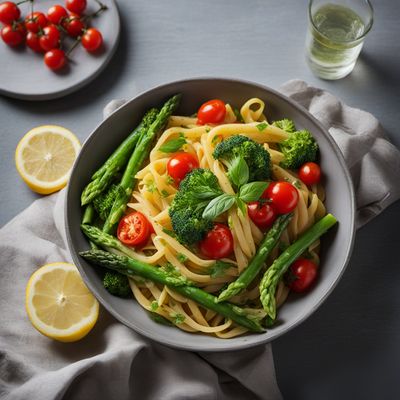
Pasta Primavera with Lemon Garlic Sauce
Springtime Delight: Pasta Primavera with Zesty Lemon Garlic Sauce